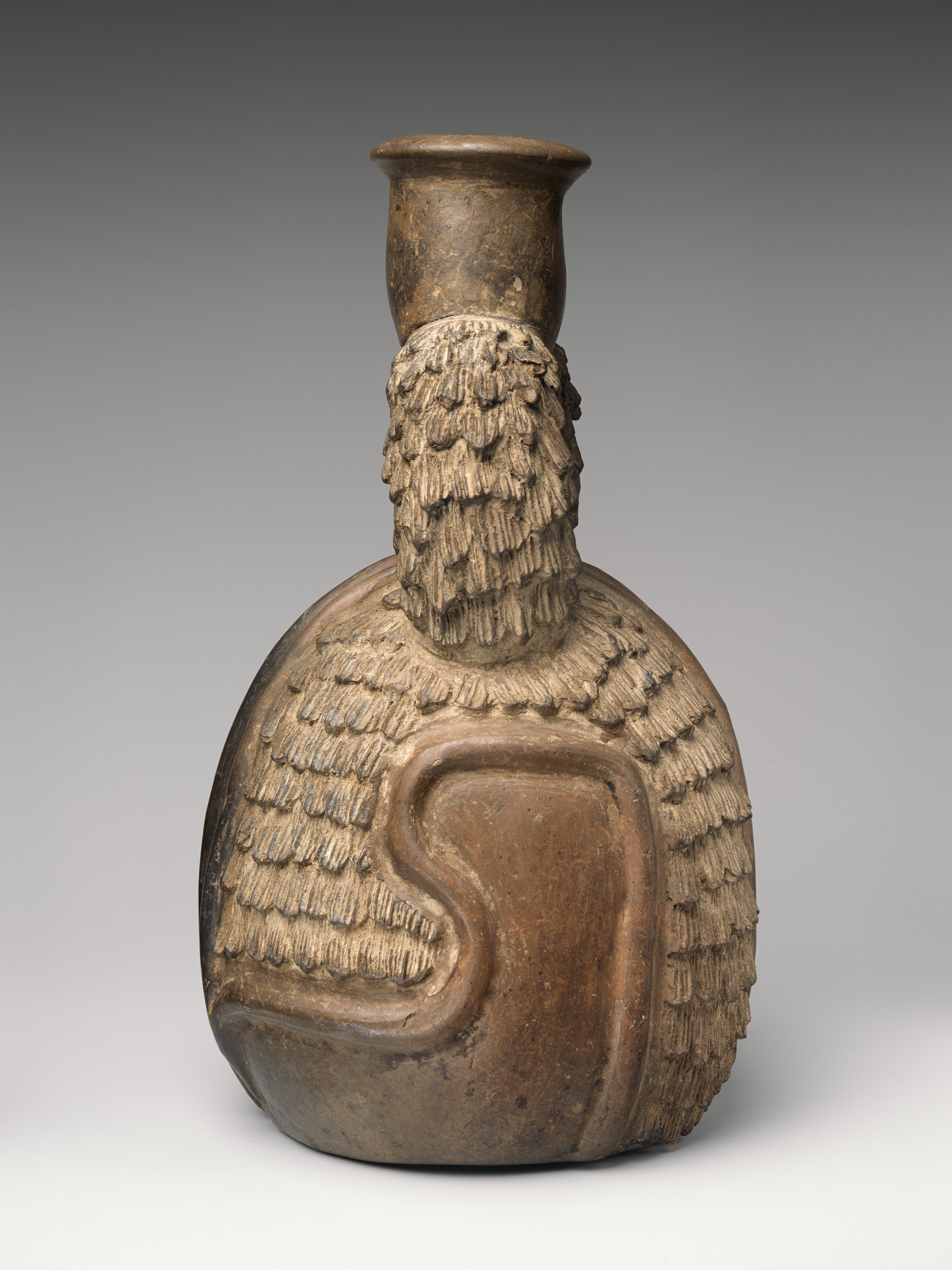Stirrup-spout bottle
Around 1200 B.C., a religious tradition, known today as Cupisnique or Chavín, started influencing the visual arts of the North Coast and highlands of Peru. While some works combined features of felines, raptorial birds, and reptiles, others were non-figurative or more abstracted. Aspects of this striking style, such as the stirrup-spout—a form itself adopted from even earlier traditions of Ecuador—would endure for centuries, ending only in the sixteenth century with the Spanish occupation.
Cupisnique artists preferred a muted palette, usually the color of the fired clay itself, but they created visual interest by contrasting smooth and textured surfaces. On this stirrup-spout bottle, the unornamented sections were created by carefully smoothing the clay when leather-hard, and then burnishing it with a polishing stone (for an example of a polishing stone, see MMA accession number 1994.35.769). The textured areas were produced by adding appliqués and impressing a comb-like tool into the clay. The combination of smooth and textured areas is a visual and tactile reminder of the interior and exterior surfaces of Spondylus shells, a bivalve considered to be among the most precious ritual materials in the ancient Andes (see MMA 2003.169).
Hugo C. Ikehara-Tsukayama, Andrew W. Mellon Curatorial/Collection Specialist Fellow, Arts of the Ancient Americas, 2022
Further Reading
Burger, Richard L. Chavin and the Origins of Andean Civilization. London: Thames and Hudson, 1992, pp. 90-99.
Burtenshaw-Zumstein, Julia T. Cupisnique, Tembladera, Chongoyape, Chavín? A Typology of Ceramic Styles from Formative Period Northern Peru, 1800-200 BC. Unpublished PhD dissertation. Norwich: University of East Anglia, 2014.
Elera, Carlos. "El complejo cultural Cupisnique: Antecedentes y desarrollo de su Ideología religiosa." Senri Ethnological Studies, No. 37 (1993), pp. 229-57.
Due to rights restrictions, this image cannot be enlarged, viewed at full screen, or downloaded.
This artwork is meant to be viewed from right to left. Scroll left to view more.



